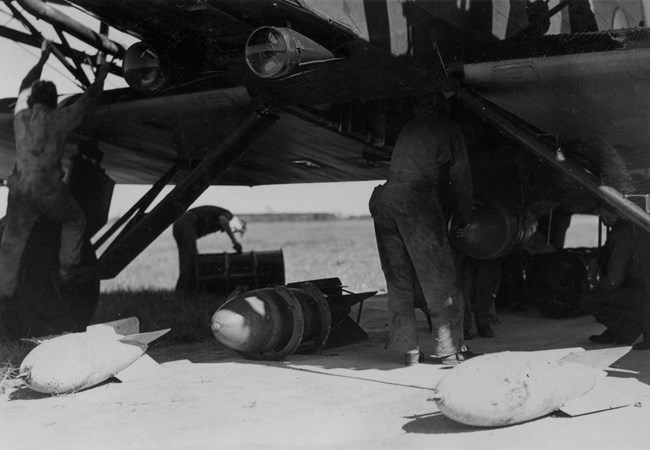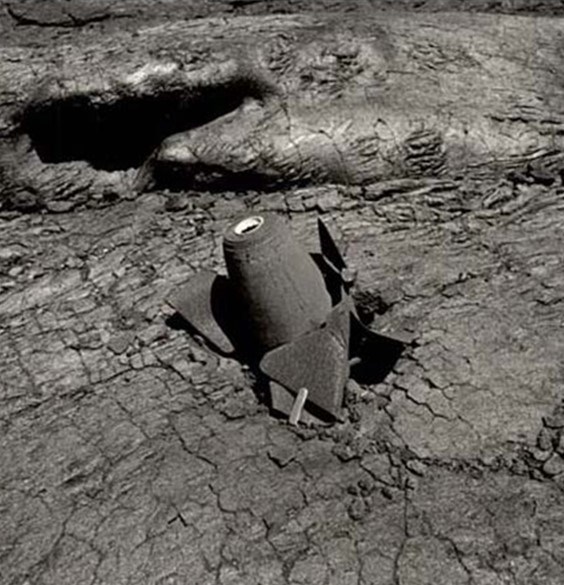|
What would it take to stop an eruption from one of Earth’s largest and most active volcanoes? That question was tested during the 1935 eruption of Mauna Loa and the first aerial bombing of an active lava flow. But should man interfere with the natural processes of the volcanic deity Pelehonuamea at all?

On November 21, 1935, a fissure of high fountaining lava marked the beginning of one of the frequent summit eruptions of Mauna Loa. Within a few days, a new vent opened on the mountain’s northern flanks. Pāhoehoe lava flowed downhill and gathered on the saddle between Mauna Loa and Mauna Kea before moving east towards Hilo, the population center of the Island of Hawaiʻi. The lava quickly moved down-slope at a rate of one mile (1.6 km) per day as local residents watched pensively. There was a growing concern that lava flows would reach the Wailuku Rver and cut the town's water supply. Pressure was on Dr. Thomas A. Jaggar, the founder of the Hawaiian Volcano Observatory (HVO), to take some sort of action. Jaggar called on the United States Army Air Service and Lieutenant Colonel George S. Patton (who later gained fame during World War II) to send military planes to detonate bombs near the eruptive vent. His hope was to use bombing to disrupt the lava channels by diverting lava from the advancing flow. However, this wasn’t the first time that the idea of using explosives to alter the path of lava had been raised. Bombing had first been suggested as a method of lava diversion in Hawaiʻi when the 1880-1881 eruption threatened Hilo, though it was never acted upon. 
The 1935 eruption ended six days after the bombing campaign and Dr. Jaggar himself considered the operation a success. He declared that the bombing, "helped hasten end of the flow,” and that, “in a natural end, the lava would not cease so abruptly.” However, Howard Stearns, a USGS geologist, who was on board the last plane to deliver bombs was doubtful. In his 1983 autobiography Stearns wrote, "I am sure it was a coincidence..." Other studies also show that the 1935 bombing, as well as another in 1942, had limited impacts. Whether the bombing stopped the 1935 lava flow remains unknown, though many geologists today cast doubt. The 1935 flow did not stop immediately, but rather waned over the course of days, and did not change paths dramatically. Even with the doubtful success of previous endeavors, the possibility of using air power to divert lava flows should they threaten population centers is still occasionally discussed today. Technology has advanced significantly since previous efforts. However, the use of such tools raises additional questions. Should man interfere in these natural events at all? To some, these actions may be viewed as an affront to the volcano deity Pelehonuamea and the processes of rejeuvenation that she represents. After all, these lava flows were occurring long before the presence of man and contribute to the continued growth of the Island of Hawaiʻi. Regardless, today the USGS Hawaiian Volcano Observatory continues to monitor the active volcanoes in Hawaiʻi by assessing their hazards, issuing warnings, and advancing scientific understanding to reduce impacts of volcanic eruptions. See video of the 1935 Mauna Loa eruption, courtesy of the USGS Hawaiian Volcano Observatory. 
Additional Resources:
|
Last updated: March 12, 2021
